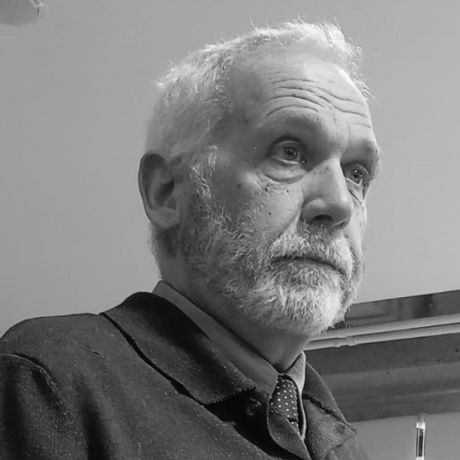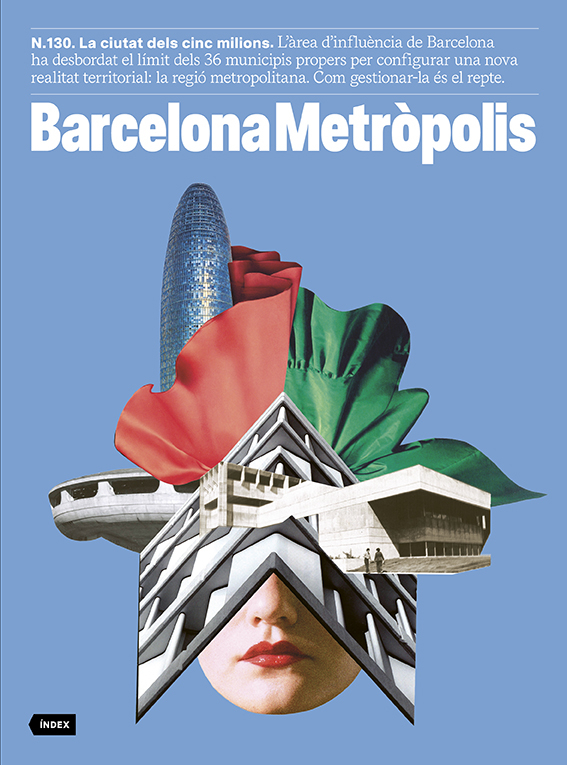Residential segregation: three key insights
- Dossier
- Apr 24
- 14 mins
Individuals’ economic status is reflected in the city through the phenomenon of residential segregation. This structural feature, inherent to the process of capitalist urbanisation, not only mirrors inequalities but also contributes to perpetuating them. Maps illustrating the territorial distribution of income reveal how the most vulnerable populations are concentrated along entire metropolitan axes.
Segregation and inequality
Economic and social inequality is one of the defining features of contemporary societies, something we witness every day. However, less attention is often paid to the relationship between inequality and the shaping of our cities. Yet, this is a crucial factor that influences both the structure of urban spaces and our ability to utilise them: the physical layout, conflicts and the way we live in cities are largely explained by inequality and the tensions it generates.[1]
Indeed, differences in people’s economic capacity are reflected in the city through the phenomenon of residential segregation, where social groups tend to separate based on their ability to choose a place of residence.[2] These possibilities depend on both household incomes and assets, as well as housing prices and mobility costs. In this context, those with fewer resources often end up living in neighbourhoods where the built environment is of poorer quality, urban deficits are more pronounced, and commutes are longer. Conversely, those with more resources also tend to cluster together to enjoy the benefits of living among themselves and avoid sharing the environment and services. Thus, the segregation of social groups in the city results from both the confinement of the poor and the secession of the wealthy.[3]
Segregation, therefore, is a structural feature inherent to the process of capitalist urbanisation. Nonetheless, it not only reflects inequalities but also decisively contributes to perpetuating them. This is because our well-being depends not only on income but also on the characteristics of the environment: the quality of the school we attend, access to services, the healthiness of the surroundings, the time spent commuting to work… Our income determines where we live, and this, in turn, affects our well-being and the opportunities we enjoy.
Segregation and metropolitan dynamics
Segregation is thus a structural and enduring phenomenon. In Barcelona, its presence was already evident in the data compiled by Ildefons Cerdà in the Monografía estadística de la clase obrera de Barcelona [Statistical Monograph of the Working Class], in 1856. Since then, segregation has undergone a significant change: it has scaled up to become a phenomenon of metropolitan scope. The reasons lie in the underlying dynamics of the contemporary urbanisation process in Catalonia and Spain.[4]
Throughout the 19th and much of the 20th century, the urbanisation process was marked by the tendency for both population and activities to concentrate within specific territories. This phase peaked between the late 1950s and early 1970s. By 1975, the seven major urban areas in Spain – Madrid, Barcelona, Valencia, Bilbao, Seville, Málaga and Zaragoza – already accounted for nearly one third of the country’s population.
In Catalonia, this process led to the demographic decline of many inland towns and solidified the dominance of the Barcelona area. Fuelled by this concentration wave, the urban networks of the capital and much of its surrounding towns expanded beyond municipal boundaries and amalgamated with each other. Consequently, by the mid-1970s, Barcelona had reached a population of 1.75 million, and the 27 municipalities then constituting the Metropolitan Corporation of Barcelona already concentrated nearly half of the country’s population on just 2% of its territory.
Nevertheless, from that point onward, urbanisation entered a new phase. On one hand, deeper integration into the European economy and the relocation of industries brought about radical changes in the production structure and disrupted migration flows towards cities. On the other hand, the development of infrastructure and the widespread use of private vehicles allowed for an expansion of the integrated space within urban areas. The metropolitan networks of mobility and interdependence extended to encompass not only the municipalities of the central conurbation but also the entire Vallès, Maresme, Baix Llobregat, and increasingly, Garraf and Alt Penedès. While the metropolis expanded and settlement dispersed, its centre experienced an absolute decline in population: by 1996, Barcelona hosted barely 1.5 million inhabitants.
The urbanisation process witnessed yet another turning point at the beginning of the century. The economic upswing and the real estate bubble attracted new waves of migrants to the metropolitan area, now largely from Africa, America or Asia. Thus, by 2015, the metropolitan region’s population exceeded five million people. The influx of this new immigration also led to population recovery in the central city, reaching 1.66 million today. This is a notable recovery, considering that migratory movements from the city to the metropolitan periphery have not ceased. Consequently, the proportion of Barcelona’s population born within the Spanish State has been declining. While in 1996, Barcelona residents born within Spanish borders amounted to1,450,420, by 2023, there were only 1,141,369. In contrast, the influx of foreign-born population, which has risen from 58,385 to 519,066 people, has not only compensated for the losses but also reversed the trend and stabilised the population above 1.6 million people, of which almost one in three was born abroad.
The stratification of territories based on household economic capacity now extends beyond individual streets or neighbourhoods to encompass entire municipalities or even broader regions.
The evolution of urbanisation explains the significant expansion of residential segregation in Catalonia. This process has led to the emergence of large interdependent urban areas, with the Barcelona metropolitan region being the most populous. Within this context, daily mobility and the housing market have become increasingly intertwined. Consequently, the stratification of territories based on household economic capacity now extends beyond individual streets or neighbourhoods to encompass entire municipalities or even broader regions.
Hence, maps illustrating the territorial distribution of income reveal how vulnerable populations are concentrated along entire metropolitan axes, such as the banks of the Besòs from Montcada to Sant Adrià, the Collblanc road corridor from L’Hospitalet de Llobregat to Esplugues and Cornellà, and the banks of the Ripoll River from Sabadell to Ripollet. Similarly, affluent populations tend to settle across broader regions, spanning areas like Collserola from Sarrià-Sant Gervasi to Sant Cugat, the Diagonal axis from Barcelona to Sant Just Desvern, and affluent peripheries surrounding metropolitan centres like Argentona, Cabrera and Llavaneres compared to Mataró, or Castellar del Vallès and Sant Quirze compared to Sabadell, and Matadepera and Ullastrell compared to Terrassa.[5]
Segregation and public resources
Segregation is thus a decisive factor in perpetuating social inequalities. Hence, any policy striving for a fairer society and city must devise and implement measures to tackle both its causes and effects. Some of these measures, such as regulating labour relations or fiscal policies, must target the reduction of income disparities. Conversely, others may adopt a territorially specific approach, addressing the causes and effects of segregation in specific areas. Notable among these are initiatives to enhance housing access, the provision of amenities and neighbourhood revitalisation efforts. Unfortunately, the rollout of such urban policies in the Barcelona metropolitan area must contend with substantial legacies and constraints.
A housing policy that can address the rapid rise in prices and alleviate access challenges would undoubtedly yield significant benefits in reducing segregation.
A housing policy that can address the rapid rise in prices and alleviate access challenges would undoubtedly yield significant benefits in reducing segregation. Nevertheless, in Barcelona metropolitan area, the financialisation of the real estate market, coupled with a shortage of protected housing stock, challenges in price regulation and low yields from land reserves for affordable housing, push in the opposite direction. Consequently, the financial burden to secure housing keeps mounting, surpassing manageable thresholds, and emerges as a primary driver of residential and urban segregation.[6]
On the other hand, the provision of amenities could potentially offset the impacts of segregation on the most disadvantaged groups by bringing essential services closer to them. Nonetheless, there’s a paradox at play in the Barcelona metropolitan area where the spatial distribution of these amenities, instead of equalising income disparities, tends to exacerbate them. Consequently, while the most vulnerable areas only have access to 17.6% of the facilities, the more affluent regions concentrate 27.7%. This disproportion is even more pronounced for private amenities than public ones, yet even public facilities tend to follow income distributions rather than offsetting them.[7]
Lastly, neighbourhood revitalisation policies also hold the potential to influence the causes and effects of segregation. On one hand, by narrowing the gap in residential quality between different city areas, they can contribute to reducing disparities in prices. On the other hand, by enhancing public spaces, amenities, accessibility and social services in the most disadvantaged neighbourhoods, they improve living standards and opportunities for the most vulnerable population. The Barcelona metropolitan area boasts extensive experience in this field, with notable examples being the Catalonia Neighbourhood Law (2004-2010) and the Barcelona Neighbourhood Plan (initiated in 2016). However, these initiatives currently face a significant hurdle: the unequal distribution of resources among municipalities. Segregation has evolved into a phenomenon of metropolitan scale, yet with the repeal of the 2004 Neighbourhood Law without an effective replacement, municipalities must continue grappling with its causes and effects using their own resources.
Indeed, the deficiencies and disparities in municipal resources impact the feasibility of implementing both rehabilitation, housing and amenities policies. As observed, in the Barcelona metropolis, the territory is becoming increasingly integrated, with segregation emerging as a phenomenon that transcends local boundaries. This reality is compounded by another factor: the administrative fragmentation within the metropolitan area and the lack of effective mechanisms for fiscal consolidation among its constituent municipalities.
Paradoxically, due to pricing, the most disadvantaged population concentrates in municipalities with poorer service provision, which also suffer from a smaller tax base and fewer per capita resources. Excluding Barcelona, if the metropolitan region’s 163 municipalities are classified based on the per capita income available to their city councils, a clear correlation emerges between vulnerability and lack of resources: municipalities in the lowest income quartile house 76.6% of the population residing in the most vulnerable census tracts. Social vulnerability and the lack of municipal resources are closely intertwined.[8]
In the Barcelona metropolitan area, segregation vividly underscores two of the main challenges facing the modern city: significant social and territorial inequalities and the need to adopt policies, instruments and public resources to govern the metropolis effectively in terms of efficiency, sustainability and equity. These issues are deeply interconnected: achieving fair metropolitan governance calls for a commitment to reducing inequalities, and effective tools for metropolitan governance hinge on addressing inequality.
[1] Secchi, B. La città dei ricchi e la città dei poveri [The City of the Rich and the City of the Poor]. Laterza, Bari, 2013.
[2] Van Ham, M., Tammaru, T., Ubarevičienė, R. and Janssen, H. (ed.). Urban Socio-Economic Segregation and Income Inequality. A Global Perspective. Springer International Publishing, Cham, 2021.
[3] Blanco, I. and Nel·lo, O. (ed.). Barrios y crisis. Crisis económica, segregación urbana e innovación social en Cataluña [Neighbourhoods and Crisis: Economic Crisis, Urban Segregation and Social Innovation in Catalonia]. Tirant lo Blanch, Valencia, 2018.
[4] López-Gay, A. “Cap a un patró territorial complex de la mobilitat residencial. El cas de la Regió Metropolitana de Barcelona” [Towards a Complex Territorial Pattern of Residential Mobility: The Case of the Barcelona Metropolitan Region]. Papers: Revista de Sociologia, 102(4), 2017.
Nel·lo, O. and López, J. (ed.), Giner, S. and Homs, O. (dir.). “El procés d’urbanització” [The Urbanisation Process]. Raó de Catalunya. La societat catalana al segle xxi. Institut d’Estudis Catalans / Enciclopèdia Catalana, Barcelona, 2016.
[5] Blanco, I. and Nel·lo, O. Barrios y crisis. Crisis económica, segregación urbana e innovación social en Cataluña [Neighbourhoods and Crisis: Economic Crisis, Urban Segregation and Social Innovation in Catalonia]. Tirant lo Blanch, Valencia, 2018.
[6] Bosch, J. L’accés a l’habitatge a la regió metropolitana de Barcelona [Access to Housing in the Barcelona Metropolitan Region]. Barcelona Metropolitan Strategic Plan, 2021.
[7] Cruz, H., Blanco, I., Gomà, R., Antón, F. and Porcel, S. “Densidad institucional, organización ciudadana y vulnerabilidad urbana”.
Nel·lo, O. Efecto barrio. Segregación residencial, desigualdad social y políticas urbanas en las grandes ciudades ibéricas. [Institutional Density, Citizen Organisation and Urban Vulnerability. Neighbourhood Effect: Residential Segregation, Social Inequality and Public Policies in the Major Iberian Cities]. Tirant lo Blanch, Valencia, 2021.
[8] Checa, J., Donat, C. and Nel·lo, O. “Segregación residencial y recursos municipales en la región metropolitana de Barcelona” [Residential Segregation and Municipal Resources in the Barcelona Metropolitan Region].
Blanco I. and Gomà, R. (ed.). ¿Vidas segregadas? Reconstruir fraternidad [Segregated Lives? Rebuilding Fraternity]. Tirant lo Blanch, Valencia, 2022.
Recommended reading
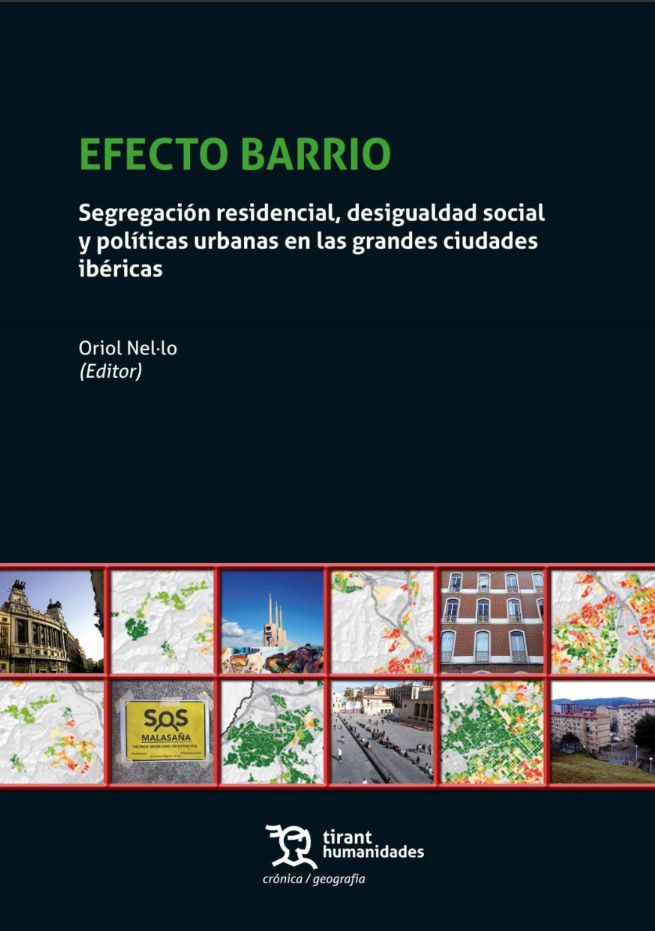 Efecto barrio. Segregación residencial, desigualdad social y políticas urbanas en las grandes ciudades ibéricas Oriol Nel·lo (ed.) Tirant lo Blanch, 2021
Efecto barrio. Segregación residencial, desigualdad social y políticas urbanas en las grandes ciudades ibéricas Oriol Nel·lo (ed.) Tirant lo Blanch, 2021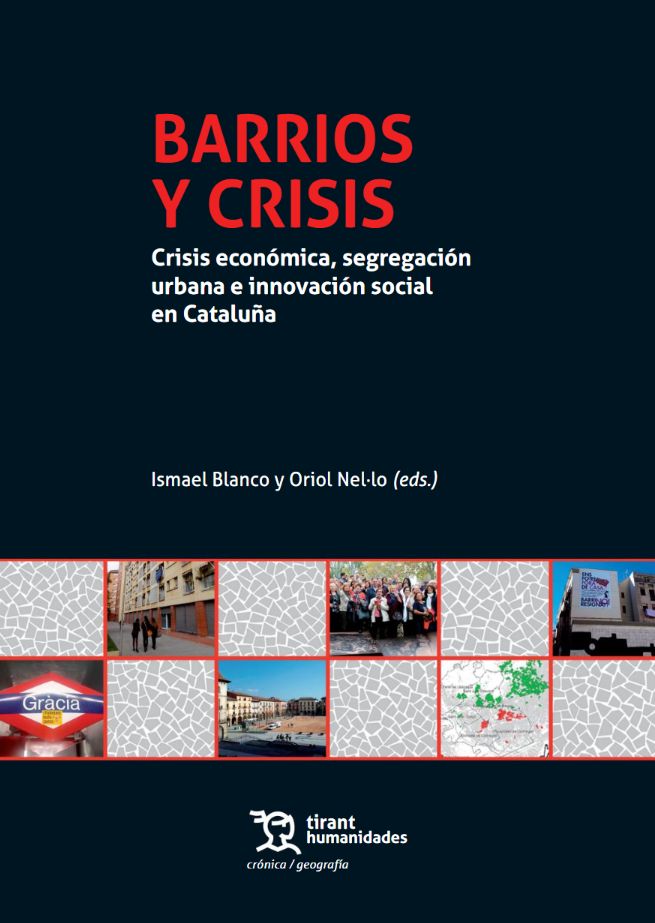 Barrios y crisis. Crisis económica, segregación urbana e innovación social en Cataluña Ismael Blanco and Oriol Nel·lo (ed.) Tirant lo Blanch, 2018
Barrios y crisis. Crisis económica, segregación urbana e innovación social en Cataluña Ismael Blanco and Oriol Nel·lo (ed.) Tirant lo Blanch, 2018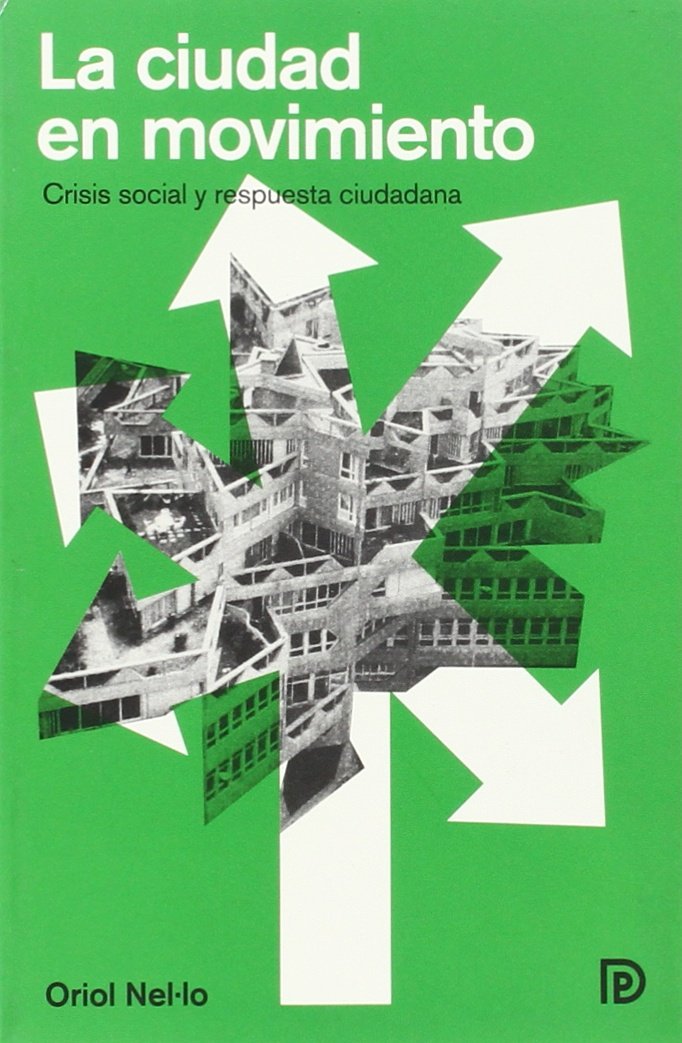 La ciudad en movimiento. Crisis social y respuesta ciudadanaDíaz & Pons Editores, 2015
La ciudad en movimiento. Crisis social y respuesta ciudadanaDíaz & Pons Editores, 2015
The newsletter
Subscribe to our newsletter to keep up to date with Barcelona Metròpolis' new developments



